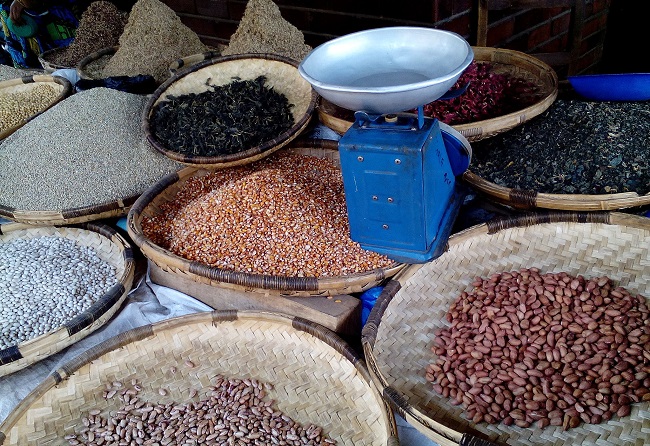Plant researchers say new varieties of a tropical crop essential to people’s survival in Africa and Latin America can withstand the effects of global warming.
Scientists believe they may have found how to safeguard a staple tropical crop, on which hundreds of millions of people depend, from the depredations of climate change.
They have discovered − through conventional breeding rather than genetic modification − 30 new “lines” (varieties) of beans that will thrive in the higher temperatures expected later this century, and which will pose a particular threat to harvests in Africa and Latin America.
The new “heat-beater” beans, an important source of protein for around 400 million people, have been identified by plant breeders with the CGIAR global agriculture research partnership.
Steve Beebe, a senior CGIAR bean researcher, announced at a conference in Ethiopia: “This discovery could be a big boon for bean production because we are facing a dire situation where, by 2050, global warming could reduce areas suitable for growing beans by 50%.
Worst-case scenario
“Incredibly, the heat-tolerant beans we tested may be able to handle a worst-case scenario where the build-up of greenhouse gases causes the world to heat up by an average of 4°C.
“Even if they can only handle a 3°C rise, that would still limit the bean production area lost to climate change to about 5%. And farmers could potentially make up for that by using these beans to expand their production of the crop in countries such as Nicaragua and Malawi, where beans are essential to survival.”
Dr Beebe told the media: “So far, so good. Some of the lines are also drought-tolerant, and some are resistant to Bean Golden Yellow Mosaic Virus.
“We are taking these beans into a new environment that we don’t know from the bean perspective. . . Will we find more surprises?”
“There are two caveats. First, so far the best lines are small red types for Central America and parts of East Africa, so we have a long road to improve a range of grain types, colours, etc.
“The other issue is that we are taking these beans into a new environment that we don’t know from the bean perspective. We have seen that a soil pathogen, pythium, is more severe. Will we find more surprises?”
Rising heat as climate change intensifies is expected to disrupt bean production in central and South American countries, including Nicaragua, Haiti, Brazil and Honduras. African countries thought to be at risk are principally Malawi and the Democratic Republic of the Congo, followed by Tanzania, Uganda and Kenya.
Many of the new heat-tolerant beans developed by the CGIAR scientists are “crosses” of the common bean − which includes pinto, white, black, and kidney beans − and the tepary bean, a hardy survivor cultivated since pre-Columbian times in what is now part of northern Mexico and the southwest US.
Highly nutritious
Beans are often called the “meat of the poor”. They are highly nutritious, providing not only protein but fibre, complex carbohydrates, vitamins, and other micronutrients. In addition to heat tolerance, CGIAR researchers are also breeding lines with a higher iron content, in an effort to tackle malnutrition.
The new beans are the result of CGIAR’s work to develop new crop varieties that can thrive in drastic weather extremes, based on research in its “genebanks”, which preserve the world’s largest seed collections of the most important staple crops.
The heat-beaters emerged from the testing of more than 1,000 bean lines − work that began as an effort to develop beans that could tolerate poor soils and drought.
The focus turned to heat-tolerance following a 2012 report from CGIAR scientists warning that heat was a much bigger threat to bean production than previously believed.











